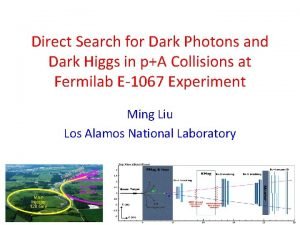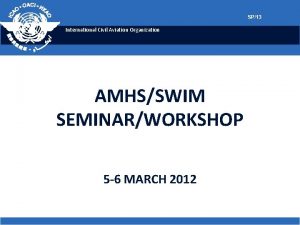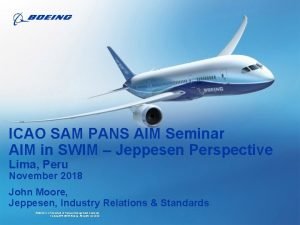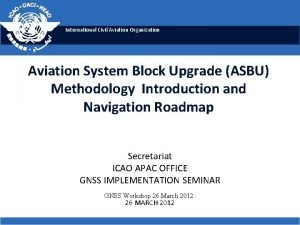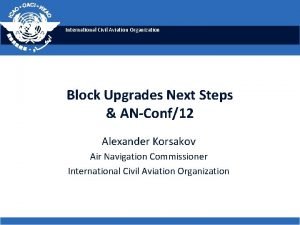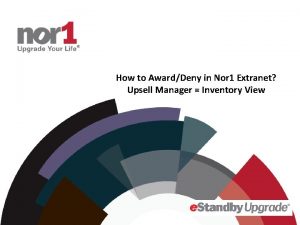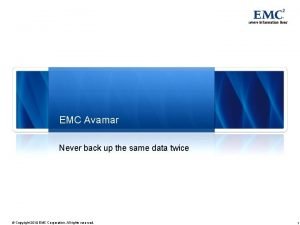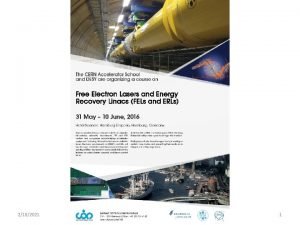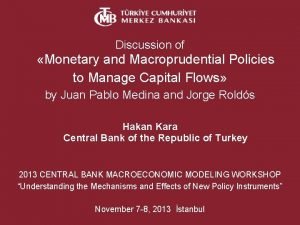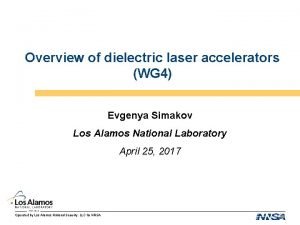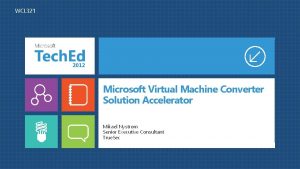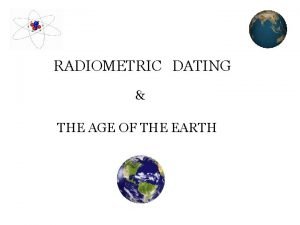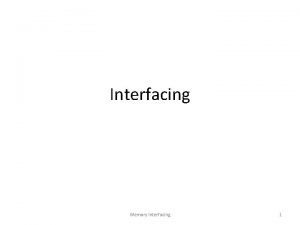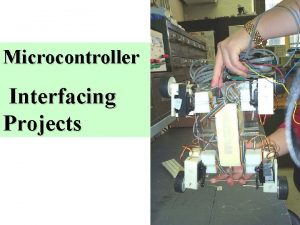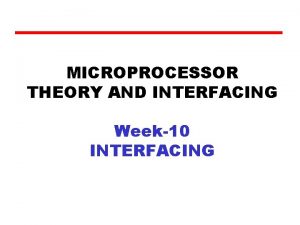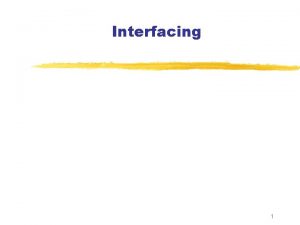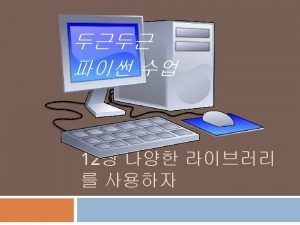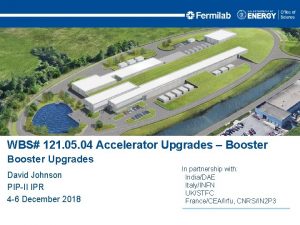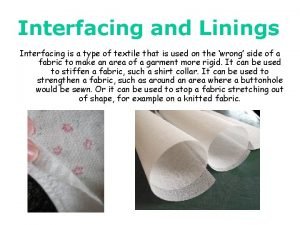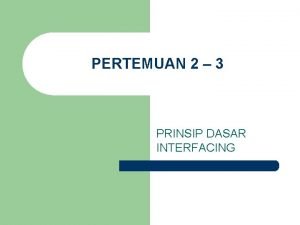Interfacing PIP II to PIP 1 Accelerator Upgrades












- Slides: 12

Interfacing PIP II to PIP 1+ Accelerator Upgrades Ioanis Kourbanis AAC Review November 19 2019

PIP-1+ Elements • Booster Intensity – Booster Beam Physics • Booster Beam Studies – Booster Dampers • Longitudinal Dampers • Transverse Dampers – Booster Collimators • Two stage beam Collimation • Booster D-magnets – Two larger aperture gradient magnets • Main Injector gamma-t Jump • Booster RF cavities – Replace all 21 Booster RF cavities 2 19 -21 November 2019 Kourbanis AAC Review

PIP 1+ and PIP-II • All AIPs in the PIP-1+ Plan have been incorporated in the PIP -II Project since March 2019 under the Direction of DOE. • The scope remains the same except in the Booster RF AIP where the scope was reduced. • The PIP-1+ AIPs are now in the PIP-II RLS (resource loaded schedule). • All of the AIPs are under “Accelerator Complex Upgrades” expect the “Booster Beam Studies” which is under “Linac Installation and Commissioning”. • All the Upgrades follow the PIP-II Project review cycle. – Preliminary Design Review (PDR) – Final Design Review (FDR) – Production Readiness Review (PRR) 3 19 -21 November 2019 Kourbanis AAC Review

PIP-II Project Management and Level 2 Systems/Managers ADVISORY COMMITTEES PIP-II Machine Advisory Committee H. Weise PIP-II Project Management Group D. Glenzinski PIP-II Strategic Project Advisory Committee J. Yeck TECHNICAL INTEGRATION Technical Director - A. Klebaner PROJECT ENGINEER DEPUTY PROJ ENGINEER A. Martinez SRF COORDINATOR J. Holzbauer QUALITY ASSURANCE MGR J. Adetunji (acting) TBD T. Di. Grazia INTERNATIONAL COORDINATION Technical Coordinators WBS 121. 01 PROJECT MANAGEMENT M. Kaducak System Manager 4 PIP-II Project L. Merminga M. Lindgren S. Belomestnykh V. Peoples K. Van Vreede A. Kenney K. Gregory D. Glenzinski PROJECT SCIENTIST PROJECT DIRECTOR US TECHNICAL COORDINATOR E. Pozdeyev J. Steimel INTEGRATION COORDINATOR IIFC-BARC IIFC-RRCAT UK-UKRI ITALY-INFN TECH. FRANCE-CEA FRANCE-CNRS/IN 2 P 3 ACCELERATOR DIV TECHNICAL DIV CFO OFFICE WDRS CSO OFFICE COO OFFICE CPO OFFICE A. Rowe IN-KIND TECHNICAL INTEGRATION A. Rowe Senior Quality Engineer FNAL SUPPORT S. Krishnagopal P. Shrivastava P. Mc. Intosh C. Pagani O. Napoly D. Longuevergne WBS 121. 02 SRF & CRYO SYSTEMS G. Wu System Manager C. Boffo, Deputy Mgr. 19 -21 November 2019 TECHNICAL DIRECTOR PROJECT MANAGER PROJECT SCIENTIST IN-KIND CONTRIBUTIONS MANAGER SPECIAL ADVISOR A. Klebaner M. Kaducak E. Pozdeyev L. Lari S. Holmes PROJECT OFFICE Project Manager - M. Kaducak PROJECT CONTROLS MANAGER D. Leeb Project Controls Specialists J. Randall M. Bossert ENVIRONMENTAL, SAFETY & HEALTH DOCUMENT SYSTEM MANAGER J. Anderson Jr. T. Langford EXECUTIVE ADMINISTRATION SUPPORT T. Langford TBD A. Tomori F. Leavell C. Dolan OPSS CONSULTANT D. Hoffer FINANCIAL MANAGER C. Jacobsen PROCUREMENT MANAGER F. Minton Procurement Administrator WBS 121. 03 ACCELERATOR SYSTEMS E. Harms System Manager WBS 121. 04 LINAC INSTALLATION & COMMISSIONING F. G. Garcia System Manager Kourbanis AAC Review C. Rossman RISK MANAGER L. Taylor LOGISTICS MANAGER TBD WBS 121. 05 ACCELERATOR COMPLEX UPGRADES I. Kourbanis System Manager WBS 121. 06 CONVENTIONAL FACILITIES S. Dixon System Manager

L 3 Systems and Managers WBS 121. 01 PROJECT MANAGEMENT M. Kaducak System Manager WBS 121. 02 SRF & CRYO SYSTEMS G. Wu System Manager WBS 121. 03 ACCELERATOR SYSTEMS E. Harms System Manager WBS 121. 04 LINAC INSTALLATION & COMMISSIONING F. G. Garcia System Manager WBS 121. 06 CONVENTIONAL FACILITIES S. Dixon System Manager WBS 121. 02. 01 WBS 121. 03. 01 WBS 121. 04. 01 Project Management G. Wu E. Harms WBS 121. 02 WBS 121. 03. 02 WBS 121. 04. 02 WBS 121. 05. 02 WBS 121. 06. 02 Half-wave Cryomodule MPS WFE Site Preparation A. Warner L. Prost Transfer Line/Beam absorber J. Ozelis WBS 121. 06. 01 Project Management WBS 121. 05. 01 Project Management F. G. Garcia I. Kourbanis S. Dixon M. Xiao R. Wielgos WBS 121. 06. 03 WBS 121. 04. 03 Test Infrastructure WBS 121. 05. 03 Cryoplant Building SSR Cryomodules HPRF, RF distribution J. Leibfritz D. Passarelli J. Steimel Beam Transfer Line Installation S. Dixon (acting) WBS 121. 02. 03 WBS 121. 03. 04 WBS 121. 04 D. Morris WBS 121. 06. 04 WBS 121. 02. 04 LLRF Building Infrastructure WBS 121. 05. 04 Utility Plant Building 650 MHz Cryomodules B. Chase J. Hunt Booster E. Huedem WBS 121. 03. 05 WBS 121. 04. 05 D. Johnson WBS 121. 06. 05 Magnets/PS Linac Installation WBS 121. 05 Linac Complex B. Hanna C. Baffes MI/RR S. Dixon Cryogenic Plant WBS 121. 03. 06 WBS 121. 04. 06 J. Dey B. Hansen Vacuum Beam Commissioning S. Chandrasekaran WBS 121. 02. 05 R. Andrews WBS 121. 02. 06 Cryogenic Distribution A. Dalesandro WBS 121. 03. 07 Controls J. Patrick WBS 121. 03. 08 E. Pozdeyev WBS 121. 04. 07 Accelerator Physics E. Pozdeyev Safety Systems R. Zifko WBS 121. 03. 09 Instrumentation V. Scarpine 5 WBS 121. 05 ACCELERATOR COMPLEX UPGRADES I. Kourbanis System Manager 19 -21 November 2019 Kourbanis AAC Review WBS 121. 06 Booster Connection R. Wielgos

Booster RF Scope • Building 21 new Booster Cavities would cost $40 M (loaded cost) and will take 7 years (after receiving parts). • Without no new stations will require to run all 22 installed stations running at 50 KV (same bucket area as now, at 20 Hz operation) • Plan to build 5 new medium bore cavities for a total of 6 new cavities (including the new prototype that is already made). • This will provide us with 1160 KV allowing us to operate with one station off. • We will have a set up and crew ready to build more stations if required. 6 19 -21 November 2019 Kourbanis AAC Review

Scope Added in 2019 Under DOE Instructions PIP 2 Carries No Dependencies on External AIPs Booster Description New Booster Injection Area with ancillary systems All components to enable PIP-II injection from SRF Linac Booster modifications for 20 Hz All modifications, including local controls, required to run Booster operations at 20 Hz Add 5 new booster cavities, 60 k. V, larger aperture to provide New Booster RF Cavities higher voltage (1. 16 MV) and reduce losses Booster Intensity (hardware) Collimators, Dampers to control/reduce losses in Booster extraction magnets Shorter, larger bore magnets to reduce losses at extraction Booster Intensity Physics Experimental and numerical studies of high intensity effects and Studies losses in Booster in PIP-II era Recycler Ring Description To support slip stacking at 20 Hz and 50 % more beam New Recycler cavities Main injector Description Reduced losses at transition in MI to address higher intensity and MI Gamma_t jump larger longitudinal beam emittance Main injector RF stations (20) 7 19 -21 November 2019 Additional RF power to enable acceleration of PIP-II beam Kourbanis AAC Review

PIP-II Includes Booster Intensity Studies in Its Scope PIP-II WBS Dictionary 121. 04. 07. 04 Inst - AP - Booster Studies 10/01/19 -06/26/25 • • • 8 Analysis of the beam dynamics of the PIP-II beam and understanding of beam intensity limits in Booster. The effort includes simulations of the PIP-II injection into Booster, simulations and experimental studies of losses in Booster with the warm linac, analysis of simulation and experimental results, and writing reports and presenting results. Explore simulation codes used in the international community and select code(s) Perform self-consistent simulations of the beam dynamics in the Booster with present parameters and benchmark simulation codes by comparing simulation results to experimental data Using simulations, demonstrate the Booster injection losses for PIP-II can be controlled at an acceptable level Demonstrate numerically and experimentally that losses at transition in the Booster can be controlled at an acceptable level Probe beam intensity limits in the Booster through numerical simulations and experimental studies to determine the maximum possible beam power PIP-II can deliver on the LBNF target Develop and apply mitigation measures to reduce uncontrolled losses in the Booster 19 -21 November 2019 Kourbanis AAC Review

Booster Collimators, Dampers, Gradient Magnets 121. 05. 04 Acc. U - Booster D. Johnson (L 3) 121. 05. 04. 02 Bstr 800 Me. V Inject D. Johnson. Gradient magnets D. Harding – head APS-TD/MSD (Acting L 5) Booster Collimators Nov. 2019 -Aug. 2022 121. 05. 04 Bstr Dampers N. Eddy – AD/Instrumentation (L 4) 121. 05. 04. 05 Bstr Collimators V. Kapin – AD/PS/Physics (L 4) Booster Gradient Magnets May 2020 -Jan. 2024 Booster Dampers Apr. 2020 -Aug. 2022 9 19 -21 November 2019 Kourbanis AAC Review

Main Injector Gamma-t Jump WBS 121. 05. 02 Beam Transfer Line Beam Absorber M. Xiao WBS 121. 05. 02. 01 WBS 121. 05. 02. 03 Project Management Beam Line Collimators Beam Absorbers MI gamma-t Jump: December 2019 -November 2024 10 19 -21 November 2019 Kourbanis WBS 121. 05. 02. 04 Gamma-t Jump D. Capista (L 4) AAC Review

Booster RF WBS 121. 05 MI/RR J. Dey(L 3) WBS 121. 05. 01 Project Management WBS 121. 05. 02 Main Injector WBS 121. 05. 03 Recycler Ring WBS 121. 05. 04 Booster RF John Reid – Level 4 Manager Matt Slabaugh – Acting Level 4 Manager Booster RF: April 2022 -December 2026 11 19 -21 November 2019 Kourbanis AAC Review

Conclusions • Under the direction of DOE all the PIP-1+ AIPs were incorporated in the PIP-II Project. – Scope remains the same except the Booster RF. • All the Accelerator complex upgrades are now in the PIP II RLS and follow the PIP-II Review cycle. • The Booster Dampers and the Booster Collimators are scheduled for completion in FY 23 in order to help us increase the beam power for Nu. MI. 12 19 -21 November 2019 Kourbanis AAC Review
 Dark sector upgrades
Dark sector upgrades Opmet briefing
Opmet briefing Aviation system block upgrades
Aviation system block upgrades Aviation system block upgrades
Aviation system block upgrades Aviation system block upgrades
Aviation system block upgrades Extranet mng
Extranet mng Emc avamar data store
Emc avamar data store Cern accelerator school 2021
Cern accelerator school 2021 Financial accelerator
Financial accelerator Dielectric wall accelerator
Dielectric wall accelerator Stanford linear accelerator tours
Stanford linear accelerator tours Mvmc download
Mvmc download Accelerator mass spectrometry
Accelerator mass spectrometry
